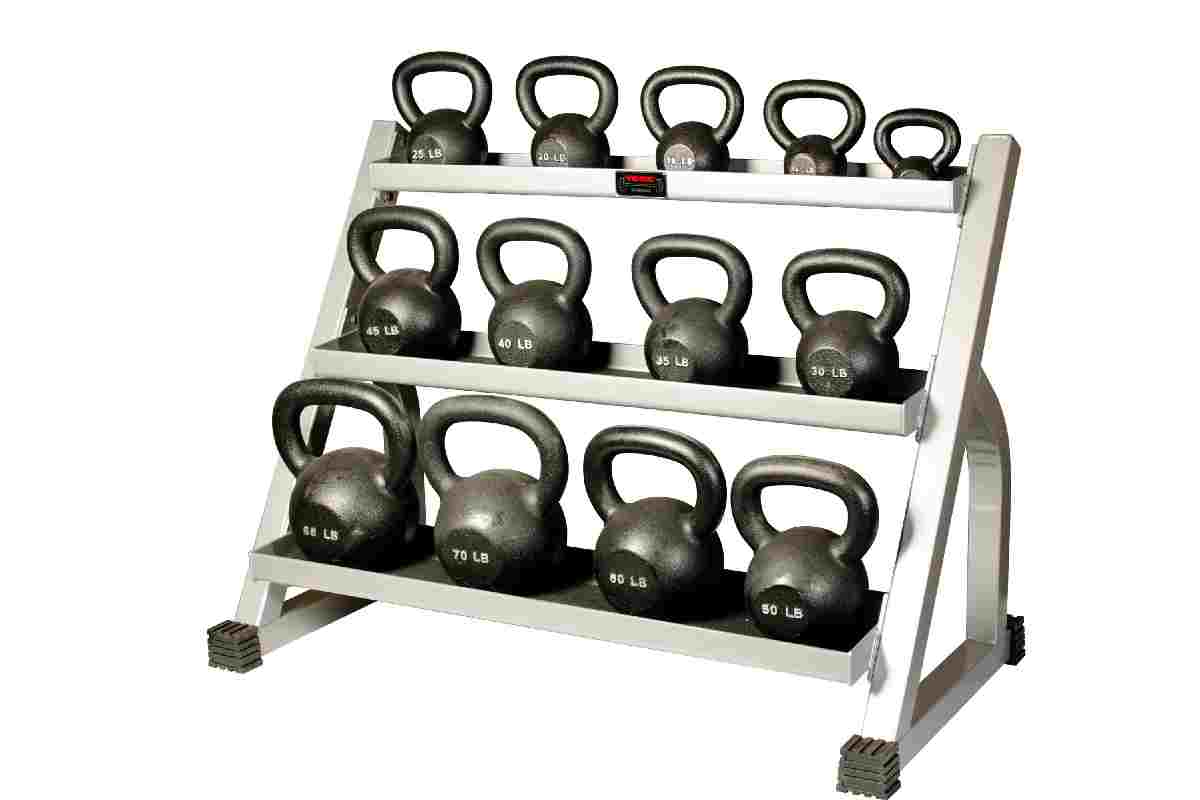Cues for the Kettlebell Sport Rack Position may remain found in my profile. However, I wanted to add a few additional lines and minor clarifications. You’ll notice that the backs of guys (KB sports athletes) arch as they stand in the rack position. Competitors must accomplish as many quality repetitions (bad lockout won’t do, and there are various criteria as well) without putting the weights down in the strength endurance sport known as a grievous sport, or GS for short.
This arched rack position remains on purpose for numerous reasons, one of which is that this allows them to “rest” between repetitions. When rack position the bells rest on top of the hips, the weight is distributed evenly without straining the lower back or the shoulders.
Table of Contents
How to Kettlebell Clean
The kettlebell clean is a powerful full-body workout that is difficult to learn. In this article, you’ll study a fool-proof, step-by-step process to clean the kettlebell without banging up your forearms! To some lifters, cleaning is little more than the annoying step before a press. But to the natural strength technician, the clean is a fundamental and valuable lift in its own right. The kettlebell clean looks like a humble exercise, and it is. But there are plenty of details to nail down before doing one safely and effectively.
Most kettlebells have a hard time with the clean – often suffering bruised forearms, torn hands, and low sore backs from backbiting with an unforgiving kettlebell. I’ll admit, the clean was by far the most strenuous exercise for me to learn when I first got into kettlebell training. It’s tricky to coach, too, because, much like the swing, it’s a short. Ballistic exercise – you don’t have the luxury of slowing it down and picking it apart during the actual lift.
The learning sequence must remain dialed in step-by-step in an order that allows you to practice the fundamental techniques and then combine those techniques safely so your clean comes together smoothly with minimal chance of injury.
So you Can do a Clean.
The purpose of the clean is to get the kettlebell into a secure rack position where it can then be pressed overhead or held in place for front squats and carries. A good clean is mandatory for a solid and safe military press – many presses fail not from a lack of pressing strength but from a sloppy clean. Plus, the clean itself is a beautiful lift. Offering all the benefits of a swing with the added challenge of stopping and stabilizing the kettlebell with your upper body and core.
Let’s address two quick pre-requisite skills before jumping into the clean itself. First, I recommend you have solid 1-arm swing strength and technique. The hips power the weight in the clean it’s not a bicep curl. So be sure to comfortably swing your target clean weight (or heavier) up to chest height for ten reps.
Get Skilled with the Bottoms-Up Clean.
The most significant part of the clean is the ability to guide the kettlebell vertically while decelerating the momentum enough to have it land smoothly in the rack position. The bottoms-up clean, done with a sufficiently light enough weight. Allows you to practice the “zip up” technique without changing grips or worrying about the bell crashing into your arm.
The Kettlebell Rack Position
The clean end with the kettlebell in the rack position is where we’ll start.
Using two hands, “cheat clean” the kettlebell and nestle it like an iron dinosaur egg in the cradle of muscle formed by your bicep, delt, pec, and forearm. Stand tall with your glutes and abs braced. Your lat and tricep should be squeezed and flexing into each other, forming a single “super muscle.” Keep the elbow down and forearm somewhat vertical. Don’t flare the arms. Instead, think about absorbing the weight into your entire body.
Using your other hand, move the bell around until you find a comfortable angle. The handle may be more parallel to the knuckles in the center of the hand. If you need to grip tight for strict presses or set at a deeper diagonal angle from the thumb webbing to the pinky-side heel of the palm. Do not let the kettlebell put you in a wrist lock. Racking or pressing with a bent wrist is the most common kettlebell mistake I see.
With your rack position and body posture, take a mental note of how everything feels. Then, you’ll attempt to recreate this feeling at the top of every clean rep. Again – keep a tall posture supported by tight glutes and abs. The lats help the shoulder and arm. The kettlebell remains nestled in the muscle cradle.
Conclusion
The same learning procedure may remain for the double bell clean: start with rack holds. Then go on to drops, power clean from the floor, and conclude with the hike pass and swing.
When using two kettlebells. Your stance will need to be a bit broader, which might restrict the range of motion in your hip hinge. Nothing else in terms of technology has changed. Many assert that due to the balanced weight, washing two bells is more straightforward than washing one. The bell will spin around your hand and settle in the rack differently depending on how you hold it during the drop and backswing.

